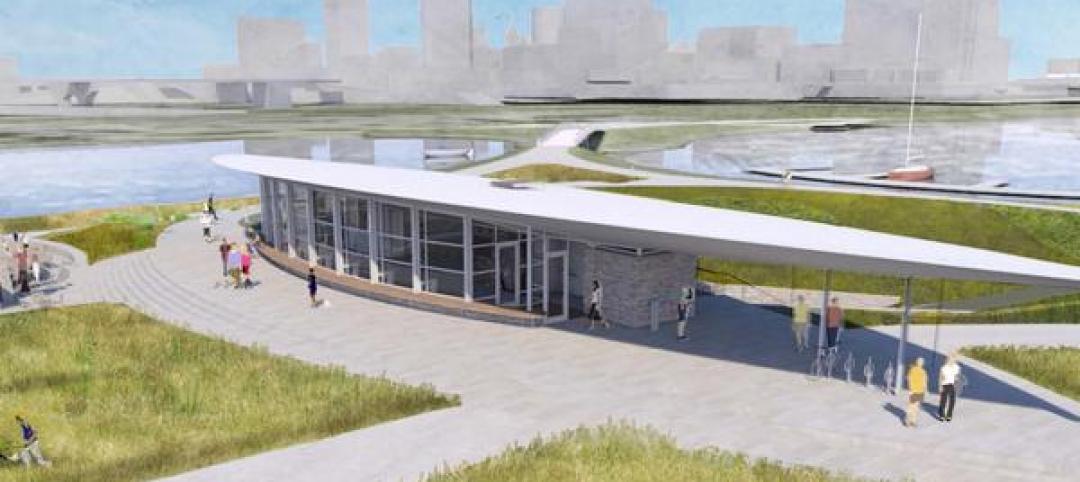In the North American green buildings market, where LEED, BREEAM, WELL, Living Building Challenge, and Green Globes dominate the landscape, the German-born Passivhaus standard (aka, Passive House) has struggled to gain a solid foothold, despite a strong grassroots growth effort among its early adopters.
There are an estimated 60,000 buildings worldwide designed and built to Passivhaus standards, the vast majority in Europe. In the U.S., more than 1.1 million sf of building space is certified or pre-certified to PHIUS+ standards, according to the Passive House Institute US. But the lion’s share is small residential buildings.
A new study conducted by FXFOWLE and funded by the New York State Energy Research and Development Authority set out to determine the viability of Passivhaus for tall residential buildings. The research involved investigating the feasibility of adapting the design of a sustainable mixed-use high-rise building in the 2016 New York City market to Passivhaus requirements. The base case building is a 593,000-sf, 26-story multifamily high-rise building in Queens that is targeting LEED v.3 Silver Certification and 20% energy cost savings from ASHRAE 90.1-2007. The study examined the impacts of achieving the standard from an architectural, enclosure detailing, mechanical, structural, constructability, resiliency, zoning, and code perspective.
FXFOWLE’s findings show promise for the niche standard. The technical difficulties of meeting the stringent energy efficiency and insulation standards can be overcome with minimal aesthetic changes and a glazing ratio of up to 40%, according to the report’s authors, Ilana Judah, Intl. Assoc. AIA, LEED AP, Principal, Director of Sustainability, and Daniel Piselli, AIA, LEED AP, Senior Associate, both with FXFOWLE.
From a financial perspective, the Passivhaus design represents an increased capital cost of 2.4%, a 40-year net present value of $5.2 million, and a payback of 24 years as compared to the base case building.
“The multifamily project type and scale are favorable to meet Passivhaus requirements due to controllable internal heat gains and low enclosure to volume ratios,” the authors wrote. “Some code and regulatory requirements conflict with Passivhaus strategies, and these must be aligned to enable implementation.”
Related Stories
Green | Apr 20, 2015
USGBC opens public comment period for LEED for existing multifamily buildings
The new LEED Operations and Maintenance: Multifamily program will offer solutions for existing multifamily projects with at least 20 units.
Cultural Facilities | Apr 16, 2015
Milwaukee’s Lakeshore State Park visitor center will be ‘off the grid’
The plans also include a built-in wastewater treatment system and rainwater collection.
Green | Apr 16, 2015
Passive House Institute introduces new categories for building certification
The new evaluation procedure considers the building in an environment where only renewable energy is used. Sun and wind provide the primary electricity.
Green | Apr 16, 2015
New version of Building Energy Data Exchange Specification launched
BEDES is a dictionary that facilitates consistent exchange of building characteristics and energy use data between tools and databases in the building energy efficiency sector.
Green | Apr 14, 2015
USGBC will recognize energy and water standards for the Living Building Challenge
This move means that projects achieving the energy and water requirements in Living Building Challenge will be considered as technically equivalent to LEED.
Green | Apr 7, 2015
USGBC survey shows Fortune 200 companies prioritize green building
The world’s top-performing companies are prioritizing sustainability as part of their corporate social responsibility efforts, and a majority of them are using LEED to achieve their goals, according to the new survey.
Codes and Standards | Apr 6, 2015
DOE releases Better Buildings Workforce Guidelines
The guidelines are aimed at strengthening and streamlining commercial building workforce training and certification programs for workers in energy auditing, building commissioning, building operations, and energy management.
Green | Apr 3, 2015
Georgia may ban use of LEED on state buildings
Georgia's state legislature is considering a measure to require all state buildings to only use green building standards that permit the use of Georgia's lumber.
Green | Apr 3, 2015
Energy benchmarking law helps make D.C. top ranked Energy Star city
First-in-the-nation law requires public reporting of annual energy performance
Green | Apr 1, 2015
Global wind power installations expected to slow through 2019
After a 20% falloff in 2013, the global wind power industry made a strong comeback in 2014, with a record 51.2 gigawatts installed. But a new report from Navigant Research forecasts a curtailment in growth.














